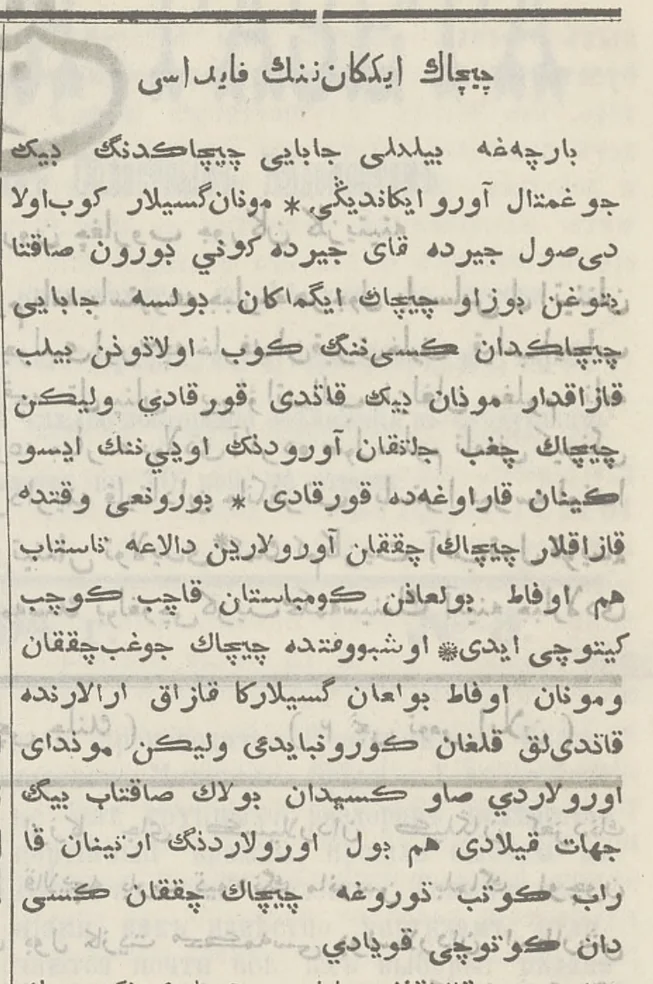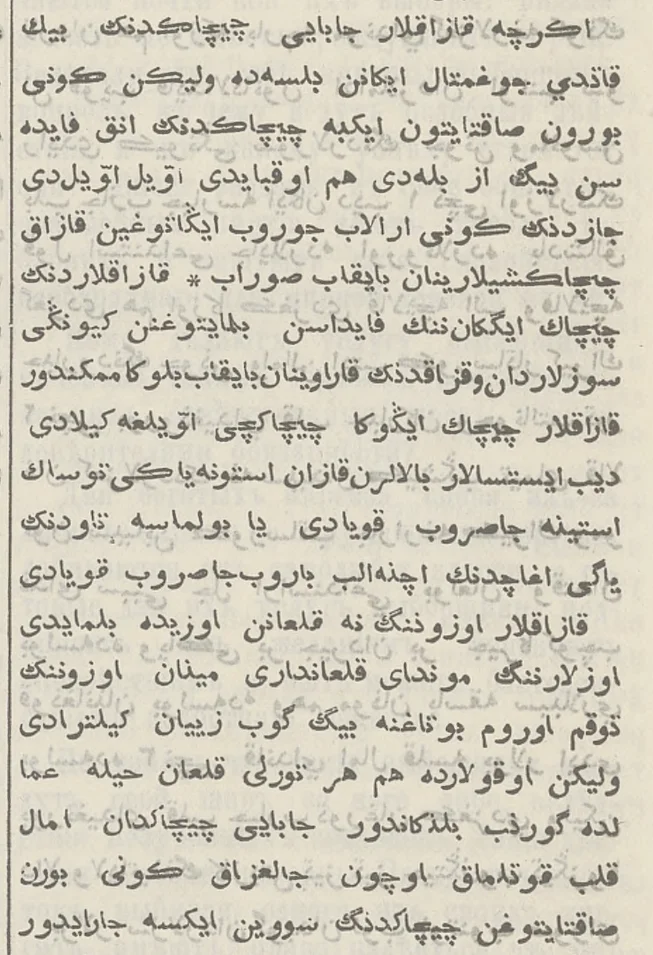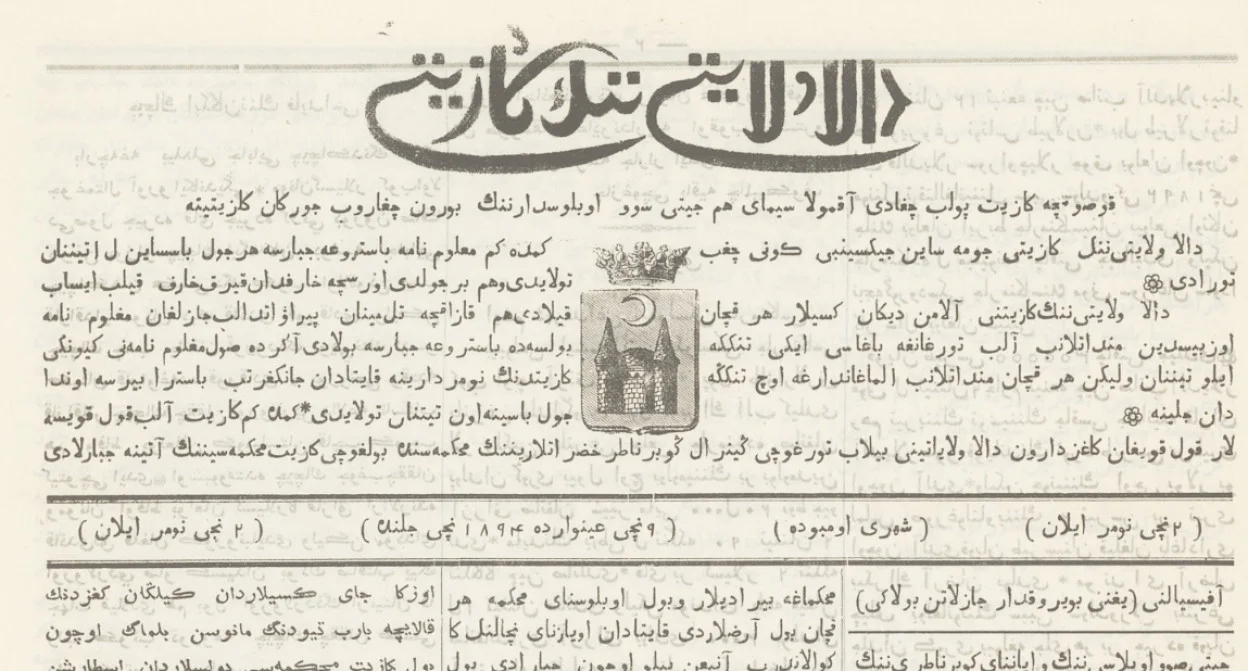From the second half of the nineteenth century, newspapers and magazines began to be published in the steppe and Turkestan regions, including some in Kazakh. Some of these publications served as the voice and transmitter of official government ideology, which was first tsarist and then Soviet.
However, this period was also marked by a great surge in intellectual zeal and activity from Kazakh thinkers, which contributed to the emergence of various socio-political, literary, and satirical publications. Qalam invites you to explore snippets from Kazakh publishing culture and history, offering a glimpse into the important issues of the past.
Smallpox inoculation, involving the introduction of infected material into the human body to build resistance, was practiced centuries before vaccines were discovered and developed. Treatises on the subject appeared in China as early as the sixteenth century, and Lady Mary Montagu, the wife of the British ambassador to the Ottoman Empire, brought this practice to Britain, where two daughters of the future king George II were inoculated in 1722. In the late eighteenth century, English physician Edward Jenner developed a safer alternative: a vaccine based on the cowpox virus, which worked by using weakened pathogens to stimulate active immunity.
It was around this time that the anti-vaccination movement first began to take shape. Many governments tried to conduct mass smallpox vaccination campaigns but often faced resistance, sometimes even violent opposition, from their subjects—and the Russian Empire was no exception. From the early nineteenth century, smallpox houses were established to administer vaccinations. However, the empire's residents were slow to embrace vaccination and continued to die from smallpox even at the end of the century.
During this period, vaccination efforts also reached the Kazakh steppe. Here, too, the local population was reluctant to get themselves vaccinated. In January 1894, the Kirgizskaia Stepnaia Gazeta published a series of articles on the benefits of smallpox vaccination written by Bakia Chalybekov, a collegiate registrar and future provincial secretary.

Kirgizskaia Stepnaia Gazeta/From open access
The Benefits of Smallpox Vaccination
Smallpox, as everyone knows, is a highly contagious disease, and its mortality rate is higher in places where preventive cowpox vaccination has not been administered. The Kazakhs are well aware of the devastating effects of smallpox and are even afraid to look into the yurt of a person suffering from the disease.
In earlier times, the Kazakhs abandoned smallpox patients to their fate, leaving them unburied as they moved away. Nowadays, those infected by or who have died of smallpox are no longer subjected to such treatment. Instead, efforts are made to keep those suffering from smallpox separate from healthy individuals, assigning caregivers who have already had smallpox themselves.
Although the Kazakhs understand how highly contagious smallpox is, they do not fully grasp the true benefits of the preventive vaccination administered by Kazakh district vaccinators, who typically travel through villages during the summer. This lack of understanding of the benefits of vaccination can be clearly seen in the usual practices of the population. For example, upon hearing that vaccinators have arrived in a village, ignorant Kazakhs immediately begin hiding their children—under cauldrons, under beds, or even taking them to the mountains or forests.
The Kazakhs do not realize the harm they are causing. Such actions inflict enormous damage on their descendants as science and experience have proven that the only salvation from smallpox is the administration of preventive vaccination material.

Kirgizskaia Stepnaia Gazeta/From open access
The Kirgizskaia Stepnaia Gazeta (in Kazakh, Dala Uälaiatynyñ Gazetі) was a special supplement to the Akmolinsk (1888–1905), Semipalatinsk (1894–1905), and Semirechensk (1894–1901) regional gazettes. It was published in Omsk in Russian with additional content in Kazakh.




